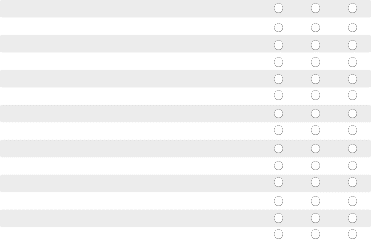Partner Services Assessment - word
Information Collections to Advance State, Tribal, Local and Territorial (STLT) Governmental Agency System Performance, Capacity, and Program Delivery
Attachment B - Online Assessment- Word Version_Final
HIV Partner Services HIPEP Assessment
OMB: 0920-0879
Attachment
B – Online Instrument: Word Version
![]()
Introduction

Dear Health Department Colleague,
HIV partner services (PS) is a core component of CDC-funded HIV prevention programs at local, state, and territorial health departments. The Program Evaluation Branch in the Division of HIV/AIDS Prevention at the Centers for Disease Control (CDC) is interested in understanding how HIV Partner Services (PS) programs are organized within a health department and how HIV PS activities are implemented by CDC-funded health departments. We will use this information to gain a better understanding of the structure and functions of HIV PS programs across CDC-funded health departments, identify gaps in services within PS programs, and provide enhanced PS technical assistance to state, territorial, and local health departments.
This assessment, which will take approximately 60 minutes to complete, will ask you about the current structure of your HIV partner services program, its functions, and its implementation processes. Please note that this is not an assessment of your organization’s performance. Your participation is voluntary, and you can decline to respond to some or all questions in this assessment.
The assessment tool can be completed all at once or you can start it at one time and return to complete it later. If you have questions, please contact Dr. Michele Rorie at [email protected].
Thank you very much for taking the time to complete the assessment and for sharing information about your partner services program.
Program Evaluation Branch
Division of HIV/AIDS Prevention, CDC
CDC estimates the average public reporting burden for this collection of information as 60 minutes per response, including the time for reviewing instructions, searching existing data/information sources, gathering and maintaining the data/information needed, and completing and reviewing the collection of information. An agency may not conduct or sponsor, and a person is not required to respond to a collection of information unless it displays a currently valid OMB control number. Send comments regarding this burden estimate or any other aspect of this collection of information, including suggestions for reducing burden to CDC/ATSDR Information Collection Review Office, 1600 Clifton Road NE, MS D-74, Atlanta, Georgia 30333; ATTN: PRA (0920-0879).
Definitions and Participant Information

DEFINITIONS
For the purpose of this assessment, the following definitions apply:
Acute HIV infection: The phase of HIV-1 disease occurring immediately after transmission, during which HIV-1 RNA or p24 antigen are detectable in serum or plasma, but anti-HIV-1 antibodies are not detectable (i.e., HIV-1 antibody test result is negative or indeterminate).
Recent HIV infection: The phase of HIV-1 disease occurring up to six months after infection, during which detectable anti-HIV-1 antibodies develop, characterized by a current positive test for HIV-1, with a documented negative HIV test within the previous six months.
Established HIV infection or infection of unknown duration: HIV-1 disease in which anti-HIV-1 antibodies are detectable, but there is no evidence that infection occurred within the previous six months (e.g., there is no documentation of a negative HIV test within the previous six months).
Newly reported HIV infection: HIV infection that has not previously been reported to the health department’s HIV surveillance program.
Previously reported HIV infection: HIV infection that has previously been reported to the health department’s HIV surveillance program and is subsequently reported again.
============================================================================
Please fill in your work-related information.
Job title
Job description
Number of years in current position
Health department name
Health department address (Street, City, State, Zip Code)
Goals, Organization, and Resources

Which of the following are major aims of your health department's HIV partner services activities? (Check all that apply.)
 Identify
and intervene in HIV
transmission chains, networks, and clusters
Identify
and intervene in HIV
transmission chains, networks, and clusters
 Identify
persons with acute
HIV infection and link them to care
Identify
persons with acute
HIV infection and link them to care
 Identify
persons
with
previously
undiagnosed,
established
HIV
infection,
or
infection
of
unknown
duration,
and
link
them
to
care
Identify
persons
with
previously
undiagnosed,
established
HIV
infection,
or
infection
of
unknown
duration,
and
link
them
to
care
 Identify
persons with previously
diagnosed infection who are not in care and link them to care
Identify
persons with previously
diagnosed infection who are not in care and link them to care
 Identify
HIV-negative persons at
risk for infection and link them to PrEP
Identify
HIV-negative persons at
risk for infection and link them to PrEP
 Identify
HIV-negative
persons at risk for infection, who decline or are not eligible for
PrEP, and re-test them periodically
Identify
HIV-negative
persons at risk for infection, who decline or are not eligible for
PrEP, and re-test them periodically
(e.g., every 3-6 months, annually)
Where is the HIV partner services program located within your health department organizational structure?
![]() Within
the HIV
program
only
Within
the HIV
program
only
![]() Within
the
STD
program
only
Within
the
STD
program
only
![]() Within
both
HIV
program
and
STD
program
Within
both
HIV
program
and
STD
program
![]() Within
an integrated HIV/STD
program
Within
an integrated HIV/STD
program
![]() Other
(please describe in box
below)
Other
(please describe in box
below)

What sources of funding are used to support HIV partner services in your jurisdiction? (Check all that apply.)



 CDC
Division of HIV/AIDS Prevention CDC Division of STD Prevention
State/territory government
CDC
Division of HIV/AIDS Prevention CDC Division of STD Prevention
State/territory government
County government
 Local
(e.g., city) government
Local
(e.g., city) government
 Other
federal and non-federal sources (please describe in box below)
Other
federal and non-federal sources (please describe in box below)

What is the approximate total annual budget for HIV partner services in your jurisdiction? (Note: Please use this year's or last year's budget to provide your estimate in box below.)

What is your primary health department affiliation for the purpose of this assessment?
![]() State/territory
health
department…………………………………………………
Skip to Question # 7
State/territory
health
department…………………………………………………
Skip to Question # 7
![]() CDC
directly funded city/county health department………………………………
Skip to Question # 11
CDC
directly funded city/county health department………………………………
Skip to Question # 11

State/Territory Health Department HIV Partner Services Program -- Staffing & Training

What health department staff conduct HIV partner services in your state/territory?

Partner service specialists (e.g., Disease Intervention Specialists) in the state/territorial health department Other staff (e.g., public health nurses) in the state/territorial health department
County health department staff or Local health department staff (other than those from directly funded
city/county health departments)
Other (please describe in box below)
No Yes
Of the persons indicated above as conducting partner services, which persons receive specialized HIV partner services training?
Not

Partner service specialists (e.g., Disease Intervention Specialists) in the directly funded state/territorial health department
Other staff (e.g., public health nurses) in the directly funded state/territorial health department
County health department staff or Local health department staff (other than those from directly funded city/county health department)
Other (please describe in box below)

No Yes
applicable
What is the approximate total number of filled full-time equivalent partner services specialist positions (DIS, care navigators, etc.) in your state/territory, including health department employees, federal assignees, and contractor positions? (Note: Do not include positions in cities/ counties directly funded by CDC for HIV prevention.)


State/territory-level FTEs


County/city/local level FTEs

Federal FTE Assignees

Contractor FTE Positions
What is the approximate total number of unfilled (or currently open) full-time equivalent partner services specialist positions in your state/territory, including health department employees, federal assignees, and contractor positions? (Note: Do not include positions in cities/ counties directly funded by CDC for HIV prevention.)

State/territory-level FTEs
County/city/local level FTEs
Federal FTE Assignees
Contractor FTE Positions

CDC Directly Funded City or County Health Department PS Program -- Staffing & Training

What health department staff conduct HIV partner services in your directly funded city or county?
No Yes

Partner service specialists (e.g., Disease Intervention Specialists) in the city/county health department Other staff (e.g., public health nurses) in the city/county health department
State health department staff

Local (e.g., sub-city) health department staff
Other (please describe in box below)
Of the persons indicated above as conducting partner services, which persons receive specialized HIV partner services training?

Partner service specialists (e.g., Disease Intervention Specialists) in the city/county health department Other staff (e.g., public health nurses) in the city/county health department
State health department staff

Local (e.g. sub-city) health department staff
Other (please describe in box below)
No Yes
Not applicable
What is the approximate total number of filled full-time equivalent partner services specialist positions in your directly funded city or county, including health department employees, federal assignees, and contractor positions?


County/city/local level FTEs


State/territorial level FTE Assignees to County/City


Federal FTE Assignees to County/City


Contractor FTE Positions
What is the approximate total number of unfilled (or currently open) full-time equivalent partner services specialist positions in your directly funded city or county, including health department employees, federal assignees, and contractor positions?

County/local level FTEs
State/territorial level FTE Assignees to County/City
Federal FTE Assignees to County/City
Contractor FTE Positions
Other Categories of Persons Authorized to Conduct Partner Services

Are any categories of persons outside of health department authorized to (1) elicit partner information from index patients with HIV (i.e., "partner elicitation”) or (2) notify partners of their possible exposure to HIV on behalf of the health department in your jurisdiction (i.e., "partner notification")?
![]()
![]() No
………………………………
Skip to Question # 20
No
………………………………
Skip to Question # 20
Yes


If yes, what categories of persons outside of the health department are authorized to conduct partner elicitation with index patients?
No Yes

Physicians Physician assistants
Advanced practice nurses or nurse practitioners Registered or licensed practical nurses
HIV test providers

Community-based organization staff Other (please describe in box below)
What categories of persons outside of the health department are authorized to conduct partner notification?
No Yes

Physicians Physician assistants
Advanced practice nurses or nurse practitioners Registered or licensed practical nurses
HIV test providers

Community-based organization staff Other (please describe in box below)

Of non-health department persons authorized to conduct partner services on behalf of the health department, which are required to receive specialized HIV partner services training?
(Note: If not authorized to conduct any PS activity, indicate by selecting "Not applicable".)
Not

Physicians Physician assistants
Advanced practice nurses or nurse practitioners Registered or licensed practical nurses
HIV test providers

Community-based organization staff
Other (please describe in box below)
No Yes
applicable
Of non-health department persons authorized to conduct partner services on behalf of the health department, which are required to report partner information to health department partner services program?
(Note: If not authorized to conduct any PS activity, indicate by selecting "Not applicable".)
Not

Physicians Physician assistants
Advanced practice nurses or nurse practitioners Registered or licensed practical nurses
HIV test providers
Community-based organization staff
Other (please describe in box below)
No Yes
applicable

Other Partner Services Activities and Policies

Which of the following activities/policies are practiced in your health department’s HIV partner services program?
No Yes

Molecular epidemiology or molecular surveillance is used in conjunction with your health department’s HIV partner services program
Partner services specialists have access to HIV surveillance database
Partner services specialists are allowed to use social media (e.g., Facebook, hook-up apps/websites) for field work
HIV and STD programs routinely share information or have integrated data systems

Reporting Requirements for Index Patients with HIV Infection

What requirements are there in your jurisdiction for healthcare providers or HIV test providers to report persons testing positive for HIV directly to the partner services program?
No Yes

Persons with acute infections must be reported directly to HIV partner services program
If "Yes", enter the number of days after diagnosis within which the case must be reported in the box below. (Note: if there is no required time for reporting, enter "None".)


Persons with established infections or infections of unknown duration must be reported directly to HIV partner services program
If "Yes", enter the number of days after diagnosis within which the case must be reported in the box below. (Note: if there is no required time for reporting, enter "None".)

What requirements are there in your jurisdiction for HIV surveillance staff to relay HIV case reports to the partner services program?
No Yes

Relay of case reports of persons with acute infections to partner services program
If "Yes", enter the number of days within which the case must be relayed to the partner services program after it is received by the surveillance program. (Note: if there is no required time for reporting, enter "None”)


Relay of case reports of persons with established infections or infections of unknown duration to partner services program
If "Yes", enter the number of days within which the case must be relayed to the partner services program after it is received by the surveillance program. (Note: if there is no required time for reporting, enter "None".)

If relay of case reports from HIV surveillance to partner services program is required, what method is used to relay the reports? Check all that apply. (Note: Select "Not applicable" if relay of cases is not required for one or more groups.)

Relay method for persons with acute infection
Relay method for persons with established infection or infection of unknown duration
Case-by- case relay





Batch or periodic relay










Not applicable

Locating and Contacting Index Patients with HIV Infection

Which of the following methods do partner services workers in your jurisdiction use for locating index patients?
No Yes

Review of HIV case reports
Review of other available databases (STI partner services database, DMV database, jail or prison databases)
People search tools (e.g., Accurint)
Social media platforms (e.g., Facebook, hook-up apps/website)
Other (please describe in box below)
Which of the following methods do partner services workers in your jurisdiction use for contacting index patients?
No Yes

Social media platforms (e.g., Facebook; hook-up apps/websites) Text messaging
Telephone call
E-mail messaging

Other (please describe in box below)

Actions Taken for Index Patients with Newly Reported HIV Infection

Are ALL persons with HIV who are (1) newly reported to your health department’s HIV surveillance program and (2) able to be located, contacted for interview by a health department partner services worker?
![]() No
No
![]() Yes………..
skip to question 28
Yes………..
skip to question 28


If not, which of the following are reasons some persons with newly reported HIV infection are not contacted for interview by a health department partner services worker?
No Yes

Insufficient number of partner services workers to interview all persons with newly reported HIV Partner services declined by the person's diagnosing provider

Concern about the safety of the partner services worker
Other (please describe in the box below)


In what order are persons with newly reported HIV infection (that is, newly reported index patients) contacted for interview?
C![]() ontacted
and interviewed in the order in which case reports are received
ontacted
and interviewed in the order in which case reports are received
 P
P![]()
![]() rioritized
according
to
specified
criteria
to
determine
order
in
which
they
will
be
contacted
and
interviewed
rioritized
according
to
specified
criteria
to
determine
order
in
which
they
will
be
contacted
and
interviewed
Other (Please specify)
If newly reported index patients are prioritized for contact and interview, which of the following are used as criteria for prioritizing them?
No Yes

Index patient known to be pregnant
Index patient known to have a partner who is pregnant
Index patient suspected of, or known to be, engaging in behaviors that substantially increase risk of transmission to multiple other persons (e.g., multiple concurrent sex or drug-injection partners)
Index patients co-infected with one or more other STIs (e.g., syphilis)
Index patients known to have a high HIV viral load (>50,000 copies per mL)
Index patients have evidence of acute infection (HIV RNA test positive and HIV antibody test negative)
Index patient has signs or symptoms of primary HIV infection
Index patient has evidence of recent infection (current positive HIV antibody test with history of negative

test within the previous 6 months)
Other (please describe in the box below)

What actions are taken by partner services workers for index patients with newly reported acute HIV infection?

Locate and contact Verify HIV care status
Initiate expedited ART (dose-pack within 24 hrs.) if not on treatment Refer/Link to HIV medical care, if not already in care
Elicit information about sex and drug-injection partners Elicit social contact information (clustering)
Enlist as recruiter for social network testing
Develop plan for notifying partners and ensuring their appropriate evaluation
Yes, for
No some Yes, for all
What actions are taken by partner services workers for index patients with newly reported established HIV infection?
Locate and contact Verify HIV care status
Initiate expedited ART (dose-pack within 24 hrs.) if not on treatment Refer/Link to HIV medical care, if not already in care
Elicit information about sex and drug-injection partners Elicit social contact information (clustering)
Enlist as recruiter for social network testing
Develop plan for notifying partners and ensuring their appropriate evaluation
Yes, for
No some Yes, for all

For index patients with newly reported infection, is there a program standard for the length of the interval between receipt of report and first contact with the index patient?
![]() No
-- program does not have a standard for this
interval
No
-- program does not have a standard for this
interval
![]()
![]() Yes
--
program
has
a
single
standard
for
this
interval,
regardless
of
the
characteristics
of
the
index
patients
Yes
--
program
has
different
standards
for
this
interval,
based
on
the
characteristics
of
the
index
patients
Yes
--
program
has
a
single
standard
for
this
interval,
regardless
of
the
characteristics
of
the
index
patients
Yes
--
program
has
different
standards
for
this
interval,
based
on
the
characteristics
of
the
index
patients

If yes (i.e., your program has a single or different standards), please specify the length of the interval, in days, for contacting index patients.
(Note: If your program has a single standard for all index patients, enter the interval in # of days in the first box; if different standards, enter the interval in # of days for index patients with acute or established infections separately.)

Single standard: For all index patients with HIV infection
Different standard: For index patients with acute infection
Different standard: For index patients with newly reported established infection

What level of referral or linkage services is provided to assist newly reported index patients with accessing to HIV medical care, if they are not already in care?
![]() No
referral/linkage
to
care
service
is
provided
No
referral/linkage
to
care
service
is
provided
![]() Referral
only
Referral
only
![]() Referral
and assistance with scheduling an
appointment
Referral
and assistance with scheduling an
appointment
![]() Active
linkage (e.g., accompany index patients to their appointment), with
follow up
Active
linkage (e.g., accompany index patients to their appointment), with
follow up
Actions Taken for Index Patients with Previously Reported HIV Infection

Are persons with HIV who have previously been reported to the health department’s HIV surveillance program, and are subsequently reported again, contacted for interview by a health department partner services worker?
 No,
previously
reported
persons
are
not
contacted
for
interview…………….
Skip to Question # 40
No,
previously
reported
persons
are
not
contacted
for
interview…………….
Skip to Question # 40
![]()
![]() Yes,
some but not all are
contacted for
interview
Yes,
some but not all are
contacted for
interview
Yes, all are contacted for interview


If some previously diagnosed persons are not contacted, which of the following are used as criteria to determine who will be contacted for interview?
No Yes

Index patient is known to be pregnant
Index patient known to have a partner who is pregnant
Index patient suspected of or known to be, engaging in behaviors that substantially increase risk of transmission to multiple other persons (e.g., multiple concurrent sex or drug-injection partners)
Index patient previously reported with HIV, now reported as infected with one or more STIs (e.g., syphilis)
Index patient known to have high HIV viral load (>50,000 copies per mL)
Other (please describe in box below)


What actions are taken by partner services workers for index patients with previously reported HIV infection?

Locate and contact Verify HIV care status
Initiate expedited ART (dose-pack within 24 hrs.) if not on treatment Refer/Link to HIV medical care, if not already in care
Elicit information about sex and drug-injection partners Elicit social contact information (clustering)
Enlist as recruiter for social network testing
Develop plan for notifying partners and ensuring their appropriate evaluation
Yes, for
No some Yes, for all
For index patients with previously reported infection, is there a program standard for the length of the interval between receipt of report and first contact with the index patient?
N![]() o
-- program does not have a standard for this interval
o
-- program does not have a standard for this interval
Y![]() es
-- program has a standard for this interval. Please specify the
length of this interval, in number of days, in the box below.
es
-- program has a standard for this interval. Please specify the
length of this interval, in number of days, in the box below.

What level of referral or linkage services is provided to assist previously reported index patients with accessing to HIV medical care, if they are not already in care?
N![]()
![]() o
referral/linkage to care service is provided Referral only
o
referral/linkage to care service is provided Referral only
R![]() eferral
and assistance with scheduling an appointment
eferral
and assistance with scheduling an appointment
A![]() ctive
linkage (e.g., accompany index patients to their appointment), with
follow up
ctive
linkage (e.g., accompany index patients to their appointment), with
follow up

Locating, Contacting, and Notifying Partners

Are ALL named sex and drug-injection partners of index patients with newly diagnosed or reported HIV infection contacted by health department partner services worker for notification of their possible exposure to HIV?
(Note: In this context, a “named partner” is a partner for whom the index patient provides enough identifying information that there is a reasonable likelihood the partner can be located and notified of their possible exposure to HIV.)
![]() No
No
![]() Yes………………………………
Skip to Question # 42
Yes………………………………
Skip to Question # 42


If not, which of the following are reasons some named partners are not contacted for notification by a health department partner services worker?
No Yes

Insufficient number of partner services workers to locate and contact all named partners Partner already known to be HIV-positive
Risk of domestic or partner violence (e.g., history of abuse) Concern about the safety of the partner services worker Insufficient identifying or contact information
Other (please describe in box below)


Which of the following methods do partner services workers in your jurisdiction use for locating partners?
No Yes

Review HIV case reports
Reviews of other available databases (e.g., STI partner services database, DMV database, jail or prison database)
People search tools (e.g., Accurint)

Social media platforms (e.g., Facebook, hook-up apps/website)
Other (please describe in box below)
Which of the following methods do partner services workers in your jurisdiction use for contacting partners for notification?
No Yes

Social media platforms (e.g., Facebook; hook-up apps/websites) Text messaging
Telephone calls
E-mail messaging
Other (please describe in box below)

In what order are named partners contacted for notification?
C![]() ontacted
in the order in which they are named
ontacted
in the order in which they are named

P![]()
![]() rioritized
according to specified criteria to determine order in which they will
be contacted and notified
rioritized
according to specified criteria to determine order in which they will
be contacted and notified
Other (please describe in box below)

If named partners are prioritized for contact and notification, which of the following are used as criteria for prioritizing them?
No Yes

Partner exposed in the last 72 hours, who might be candidates for non-occupational post-exposure prophylaxis (PEP) if available
Partner known or likely to be pregnant

![]() artner
with
whom
the
index
patient
reports
having
had
unprotected
anal
or
vaginal
sex
(i.e.,
sex
without condom or PrEP with an
index patient with an unsuppressed viral
load)
artner
with
whom
the
index
patient
reports
having
had
unprotected
anal
or
vaginal
sex
(i.e.,
sex
without condom or PrEP with an
index patient with an unsuppressed viral
load)
Partner of index patient suspected of having acute HIV infection at the time of exposure
Partner of index patient with signs or symptoms of primary HIV infection at the time of exposure Partner of index patient suspected of having recent HIV infection at the time of exposure Partner of index patient known to have high HIV viral load (e.g., > 50,000 copies per mL)
Partner of index patient co-infected with one or more other STIs (e.g., syphilis) at the time of exposure
Partner whose exposure history suggests they may have been infected within the previous three months, in which case they might be more contagious and more likely to spread HIV to others
Partner suspected of, or known to be, engaging in behaviors that, if they are already infected, substantially increase their risk for transmitting infection to multiple other persons (e.g., multiple concurrent sex or drug-injection partners)
Other (please describe in box below)

What options are offered for notifying partners of index patients with acute infection? (Check all that apply)


Provider notification (Partners are notified by health department staff)


Self-notification (Index patients notify their partners themselves)


Contract notification (Index patients agree to notify their partners within a specific time; if partners do not access partner services within that time, the health department will contact them directly)


Third-party notification (Partners are notified by providers who are not with the health department; e.g., private physicians)





Dual notification (Partners are notified by index patients and health department staff together).
Other (please describe in box below)

Actions Taken for Partners Already Known to be HIV-Positive

Is any further action taken if the partners are already known by record or database review to be HIV-positive?
![]() No
………………………………
Skip to Question # 49
No
………………………………
Skip to Question # 49
![]() Yes
Yes


If yes, what actions are taken for such partners?

Review available records and databases to check HIV care status
Review available records and databases to determine if virally suppressed Locate and contact to verify HIV medical care status
Refer/link to HIV medical care, if not already in care Elicit information about sex and drug-injection partners Elicit social contact information ("clustering")

Enlist as recruiter for social network testing
Other (Please describe in box below)
Yes, for
N![]()
![]()
![]()
![]()
![]() o some Yes,
for
all
o some Yes,
for
all
If your program locates and contacts such partners, is there a program standard for the length of the interval between when the person is named as a partner and when they are contacted?
 No -- program does not have a
standard for this
interval ………………………………
Skip to Question # 51
No -- program does not have a
standard for this
interval ………………………………
Skip to Question # 51
 Yes
--
program
has
a
single
standard
for
this
interval,
regardless
of
the
characteristics
of
the
index
patient
naming
the
partner
Yes
--
program
has
a
single
standard
for
this
interval,
regardless
of
the
characteristics
of
the
index
patient
naming
the
partner
![]() Yes
--
program
has
different
standards
for
this
interval,
based
on
the
characteristics
of
the
index
patient
naming
the
partner
Yes
--
program
has
different
standards
for
this
interval,
based
on
the
characteristics
of
the
index
patient
naming
the
partner
If yes (i.e., your program has a single or different standards), please specify the length of the interval, in days, for contacting partners.
(Note: If your program has a single standard, enter the interval in # of days in the first box; if different standards, enter the number of days for partners of index patients with newly reported acute or established infections or those with previously reported infections separately.)

Single standard: For partners of all
index patients with HIV infection
Different standards: For partners of index patients with acute infection
Different standards: For partners of index patients with newly reported established infection
Different standards: For partners of index patients with
previously reported infection

What level of referral or linkage services is provided to assist such partners with accessing HIV medical care, if they are not already in care?
![]() No
referral/linkage
to
care
service
is
provided
No
referral/linkage
to
care
service
is
provided
![]() Referral
only
Referral
only
![]() Referral
and assistance with scheduling an
appointment
Referral
and assistance with scheduling an
appointment
![]() Active
linkage (e.g., accompany partners to their appointments), with follow
up
Active
linkage (e.g., accompany partners to their appointments), with follow
up

Actions Taken for Partners Not Already Known to be HIV-Positive

What actions are taken by partner services workers in your jurisdiction for partners not already known to be HIV-positive?

Locate, contact, and notify of possible exposure to HIV
Test for HIV in the field -- with point-of-care rapid HIV test
Test for HIV in the field -- phlebotomy for laboratory-based HIV test
Test for HIV in clinic -- with point of care rapid HIV test
Test for HIV in clinic -- with laboratory-based HIV test
Yes, for
No some Yes, for all
What type of HIV tests does your HIV partner services program use for point-of-care (POC) rapid HIV testing in the following settings? Check all that apply.
In the field In clinic
Antigen/Antibody Test (e.g., Determine)



Other Rapid






Test Not Applicable
What type of HIV tests does your HIV partner services program use in laboratory-based HIV testing
in the following settings? Check all that apply.
In the field In clinic
4th Generation Test





Other Laboratory-






based Test Not Applicable
If your program provides HIV testing to partners, is there a program standard for the length of the interval between when the person is named as a partner and when he/she is tested?
N![]() o
-- program does not have a standard for this interval……….skip
to #57
o
-- program does not have a standard for this interval……….skip
to #57
Y![]()
![]() es
--
program
has
a
single
standard
for
this
interval,
regardless
of
the
characteristics
of
the
index
patient
naming
the
partner
Yes
--
program
has
different
standards
for
this
interval,
based
on
the
characteristics
of
the
index
patient
naming
the
partner
es
--
program
has
a
single
standard
for
this
interval,
regardless
of
the
characteristics
of
the
index
patient
naming
the
partner
Yes
--
program
has
different
standards
for
this
interval,
based
on
the
characteristics
of
the
index
patient
naming
the
partner


If yes (i.e., your program has a single or different standards), please specify the length of the interval, in days, for testing partners for HIV infection.
(Note: If your program has a single standard, enter the number of interval days in the first box; if different standards, enter the number of interval days for partners of index patients with newly reported acute, established or previously reported infections separately.)

Single standard: For partners of all
index patients with HIV infection
Different standards: For partners of index patients with acute infection
Different standards: For partners of index patients with newly reported established infection
Different standards: For partners of index patients with
previously reported infection


What actions are taken in your jurisdiction for partners who decline to be tested for HIV?
Yes, for
No some Yes, for all

Elicit social contact information ("cluster interview") Enlist as recruiter for social network testing Contact later to re-offer HIV test

Other (please describe in box below)

Actions Taken for Partners Not Already Known to be HIV Infected Who Test Positive for HIV

What actions are taken for partners who test positive for HIV when the index patient has an acute HIV infection?

Initiate expedited ART (dose pack within 24 hours) if not on treatment Refer/Link to HIV medical care
Elicit information about sex and drug-injection partners Elicit social contact information ("clustering")
Enlist as recruiter for social network testing
Yes, for
No some Yes, for all
What actions are taken for partners who test positive for HIV when the index patient has a newly reported, established HIV infection?
Initiate expedited ART (dose pack within 24 hours) if not on treatment Refer/Link to HIV medical care
Elicit information about sex and drug-injection partners Elicit social contact information ("clustering")
Enlist as recruiter for social network testing
Yes, for
No some Yes, for all
What actions are taken for partners who test positive for HIV when the index patient has a previously reported HIV infection?
Initiate expedited ART (dose pack within 24 hours) if not on treatment Refer/Link to HIV medical care
Elicit information about sex and drug-injection partners Elicit social contact information ("clustering")
Enlist as recruiter for social network testing
Yes, for
No some Yes, for all
What level of support or assistance with referral or linkage to HIV medical care is provided to partners who test positive for HIV and are not already in care?
![]() No
referral/linkage
to
care
service
is
provided
No
referral/linkage
to
care
service
is
provided
![]() Referral
only
Referral
only
![]() Referral
and assistance with scheduling an
appointment
Referral
and assistance with scheduling an
appointment
![]() Active
linkage (e.g., accompany partners to their appointment), with follow
up
Active
linkage (e.g., accompany partners to their appointment), with follow
up

Actions Taken for Partners Not Already Known to be HIV Infected Who Test Negative for HIV

What actions are taken for partners who test negative for HIV when the index patient has an acute HIV infection?
No

Recommend follow-up HIV tests, based on last likely exposure or in standard interval (e.g., 4 weeks)
Initiate expedited preventive treatment with PrEP (e.g., dose pack within 24 hours), if not already on PrEP
Refer or link to PrEP provider, if not already on PrEP
Elicit social contact information (cluster interview)
Enlist as recruiter for social network testing
Other (please describe in box below)

Yes, for
some Yes, for all
What actions are taken for partners who test negative for HIV when the index patient has a newly reported, established HIV infection?
No

Recommend follow-up HIV tests, based on last likely exposure or in standard interval (e.g., 4 weeks)
Initiate expedited preventive treatment with PrEP (e.g., dose pack within 24 hours), if not already on PrEP
Refer or link to PrEP provider, if not already on PrEP
Elicit social contact information (cluster interview)
Enlist as recruiter for social network testing
Other (please describe in box below)

Yes, for
some Yes, for all

What actions are taken for partners who test negative for HIV when the index patient has a previously reported HIV infection?

No
Recommend follow-up HIV tests, based on last likely exposure or in standard interval (e.g., 4 weeks)
Initiate expedited preventive treatment with PrEP (e.g., dose pack within 24 hours), if not already on PrEP
Refer or link to PrEP provider, if not already on PrEP
Elicit social contact information (cluster interview)
Enlist as recruiter for social network testing
Other (please describe in box below)

Yes, for
some Yes, for all
For partners testing HIV-negative who are not started on or referred for PrEP, does your program recommend regular, periodic re-testing for HIV?
N![]() o………………………………
Skip to Question # 67
o………………………………
Skip to Question # 67
![]()
Y![]() es,
for some Yes, for all
es,
for some Yes, for all


If yes, what is the recommended frequency of re-testing for HIV?
![]() Every
3-6
months
Every
3-6
months
![]()
![]() Every
6-12
months
Every
6-12
months
![]() Annually
Annually
Other (Please specify the frequency in months in box below)

Other Services Provided by Partner Service Workers for Index Patients or Partners

Do partner services workers in your jurisdiction provide syphilis testing for index patients or partners?
![]() No
No
![]() Yes,
if
epidemiologically
indicated
Yes,
if
epidemiologically
indicated
![]() Yes,
for
all
Yes,
for
all
Do partner services workers in your jurisdiction provide hepatitis C testing for index patients or partners?
![]() No
No
![]() Yes,
only for PWID
Yes,
only for PWID
![]()
![]() Yes,
only if born
1945-1965 Yes,
for all
Yes,
only if born
1945-1965 Yes,
for all

What other actions are taken by partner services workers in your jurisdiction for index patients or partners?

Provide risk reduction counseling
Yes, for
No some Yes, for all
Provide condoms
Screen for mental health service needs
Refer or link to mental health service providers Screen for substance use disorder service needs
Refer or link to substance use disorder service providers Screen for housing service needs
Refer or link to housing service providers
Screening for transportation service needs (e.g., to medical appointments) Refer or link to transportation service providers
Screen for domestic violence intervention needs
Refer or link to domestic violence intervention service providers Screen for HIV perinatal service coordination needs

Refer or link to perinatal services coordinators
Other (please describe in box below)
Non-Partner Services-related Activities Performed by Partner Services Workers

Do HIV partner services workers in your health department perform duties not directly related to partner services?
![]() No
………………………………
Skip to End of Survey
No
………………………………
Skip to End of Survey
![]() Yes
Yes


If yes, which of the following non-partner services related actions do they perform?
No Yes

Linkage to HIV medical care for persons testing positive in health departments HIV testing programs Investigation of PWH identified through data-to-care activities as presumptively not in care
Linkage to HIV medical care for persons confirmed through data-to-care activities not to be in care Investigation of PWH identified through data-to-care activities presumptively not in care

Linkage to HIV medical care for persons confirmed through data-to-care activities not in care
Other (please describe in box below)
Thank you for your time and valuable input!

| File Type | application/vnd.openxmlformats-officedocument.wordprocessingml.document |
| File Title | View Survey |
| Author | Candace Rutt |
| File Modified | 0000-00-00 |
| File Created | 2021-01-14 |
© 2025 OMB.report | Privacy Policy